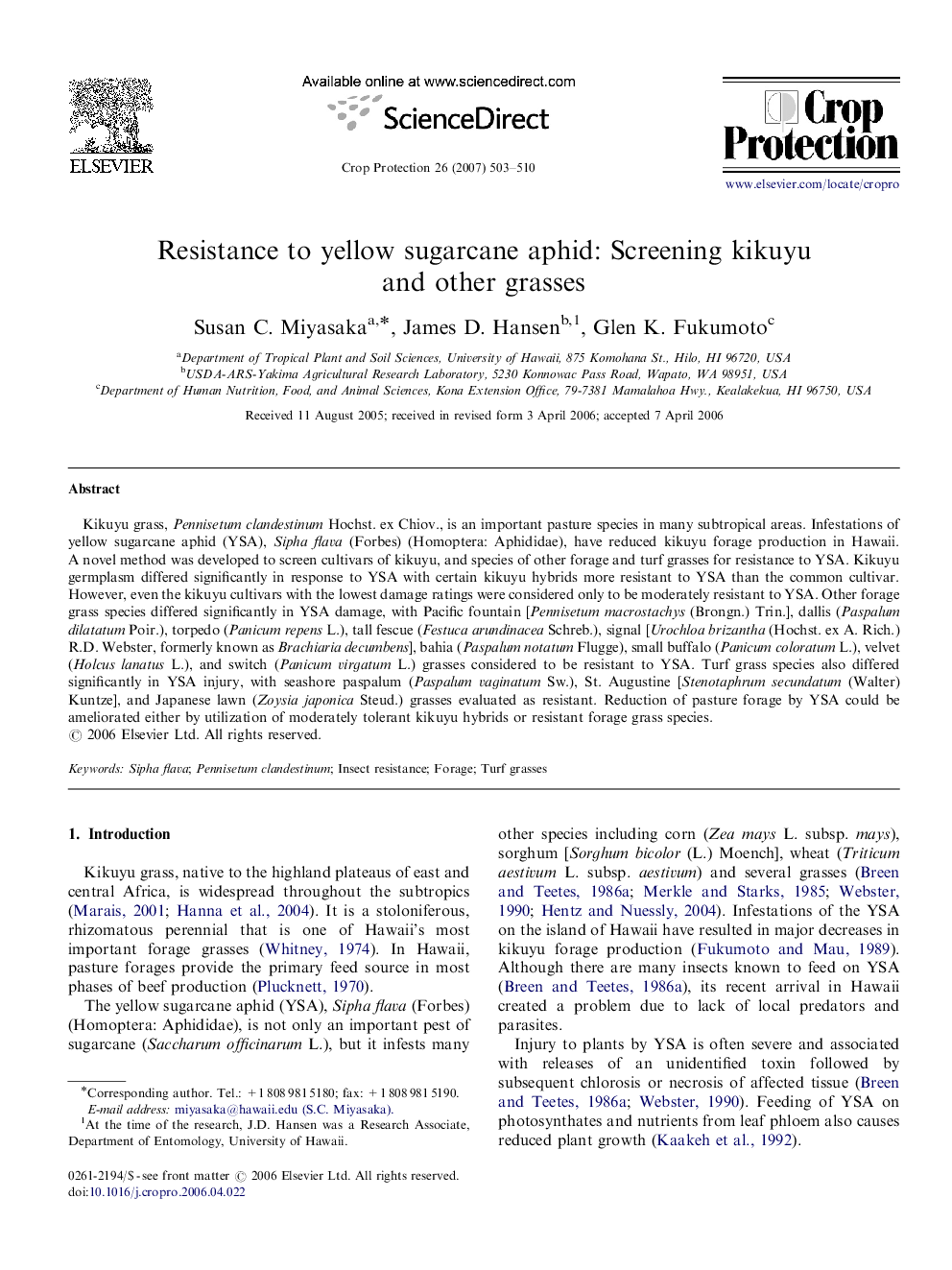| Article ID | Journal | Published Year | Pages | File Type |
|---|---|---|---|---|
| 4507173 | Crop Protection | 2007 | 8 Pages |
Kikuyu grass, Pennisetum clandestinum Hochst. ex Chiov., is an important pasture species in many subtropical areas. Infestations of yellow sugarcane aphid (YSA), Sipha flava (Forbes) (Homoptera: Aphididae), have reduced kikuyu forage production in Hawaii. A novel method was developed to screen cultivars of kikuyu, and species of other forage and turf grasses for resistance to YSA. Kikuyu germplasm differed significantly in response to YSA with certain kikuyu hybrids more resistant to YSA than the common cultivar. However, even the kikuyu cultivars with the lowest damage ratings were considered only to be moderately resistant to YSA. Other forage grass species differed significantly in YSA damage, with Pacific fountain [Pennisetum macrostachys (Brongn.) Trin.], dallis (Paspalum dilatatum Poir.), torpedo (Panicum repens L.), tall fescue (Festuca arundinacea Schreb.), signal [Urochloa brizantha (Hochst. ex A. Rich.) R.D. Webster, formerly known as Brachiaria decumbens], bahia (Paspalum notatum Flugge), small buffalo (Panicum coloratum L.), velvet (Holcus lanatus L.), and switch (Panicum virgatum L.) grasses considered to be resistant to YSA. Turf grass species also differed significantly in YSA injury, with seashore paspalum (Paspalum vaginatum Sw.), St. Augustine [Stenotaphrum secundatum (Walter) Kuntze], and Japanese lawn (Zoysia japonica Steud.) grasses evaluated as resistant. Reduction of pasture forage by YSA could be ameliorated either by utilization of moderately tolerant kikuyu hybrids or resistant forage grass species.
